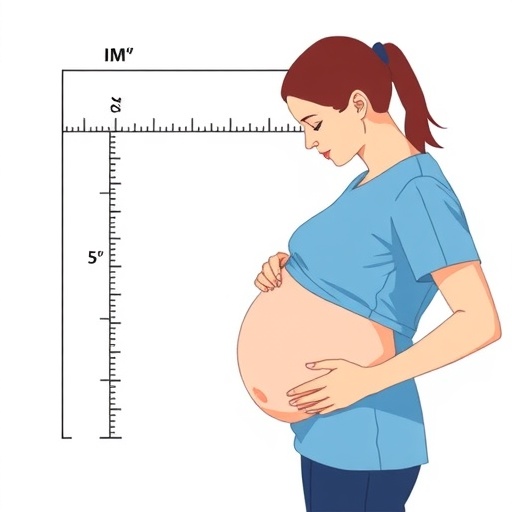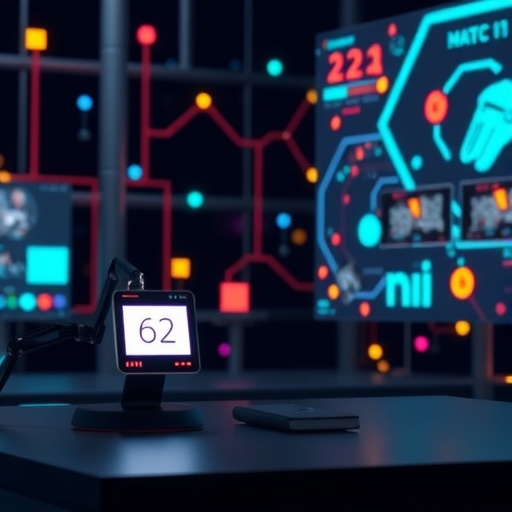
In a groundbreaking study published in BMC Pediatrics, researchers Shen and Li delve into a pressing issue faced by healthcare providers in pediatric intensive care units: late-onset sepsis. This condition, characterized by infection occurring after the first 72 hours of hospitalization, poses significant risks to vulnerable pediatric populations, including premature infants and children with complex medical needs. The authors meticulously examined the need for reliable diagnostic biomarkers that could aid clinicians in identifying and treating this formidable challenge more promptly and effectively.
Sepsis remains a leading cause of morbidity and mortality among children in intensive care settings. With the increasing complexity of patient cases, clinicians often struggle to differentiate between sepsis and other non-infectious causes of clinical deterioration. This ambiguity can lead to delays in treatment and escalated healthcare costs. Shen and Li’s research shines a spotlight on the necessity for innovative diagnostic approaches that can streamline assessment and improve patient outcomes.
The retrospective cohort study scrutinized clinical data from pediatric patients diagnosed with late-onset sepsis. By analyzing a broad set of biomarkers collected during routine hospital care, the research team aimed to pinpoint specific indicators that could serve as definitive diagnostic tools. What sets the study apart is its comprehensive approach, incorporating both clinical metrics and laboratory results to enhance the robustness of findings.
High-throughput technologies and sophisticated analytical techniques have revolutionized the way we understand diseases, and this study exemplifies such progress. Employing advanced statistical methodologies, Shen and Li navigated through a wealth of clinical data to uncover patterns previously overlooked. Their findings underscore the role of specific biomarkers, such as C-reactive protein and procalcitonin, which have been implicated in the pathophysiology of sepsis, particularly in the pediatric population.
In constructing a reliable framework for sepsis diagnosis, the researchers also considered the challenges associated with existing biomarkers. For instance, while some traditional markers have demonstrated promise, their specificity and sensitivity can vary significantly based on the timing of sample collection and the underlying etiology of the infection. This highlights the importance of a tailored diagnostic approach that considers individual patient contexts.
One of the most compelling aspects of Shen and Li’s research is its potential to influence clinical practice directly. By identifying actionable biomarkers that provide rapid results, clinicians may be better equipped to initiate targeted therapies earlier in the course of sepsis. This is particularly critical given that time is of the essence in sepsis management; each hour of delay in appropriate antibiotic therapy can significantly impact patient survival rates.
In addition to enhancing diagnostic capabilities, the study opens up new avenues for research. The identification of biomarkers can lead to the exploration of novel therapeutic targets and the development of adjunctive treatment modalities aimed at bolstering immune responses in affected children. Collaborative efforts among researchers, clinicians, and pharmaceutical companies may pave the way for innovative solutions that address the intricacies of sepsis management.
Moreover, this research aligns with ongoing efforts to prioritize personalized medicine in pediatric care. As clinicians increasingly recognize that responses to infections can vary dramatically among patients, the ability to utilize specific biomarkers could foster more individualized treatment strategies. This paradigm shift represents a profound transformation in the approach to pediatric sepsis, enabling precision medicine to take center stage.
In considering the broader implications of Shen and Li’s findings, one cannot overlook the potential for these biomarkers to influence healthcare policy. With the rising economic burdens of sepsis-related complications, there is an urgent need for strategies that prioritize early diagnosis and intervention. Policymakers, informed by research such as this, may advocate for resource allocation towards the implementation of rapid diagnostic tests in pediatric settings, ultimately enhancing patient care and optimizing healthcare expenditures.
As the scientific community grapples with the challenges posed by infectious diseases, studies like this illuminate the path forward. By harnessing the power of modern diagnostic technologies and a deeper understanding of disease mechanisms, researchers are laying the groundwork for significant advancements in pediatric intensive care. The commitment shown by Shen and Li not only enhances our understanding of late-onset sepsis but also generates hope for improved management strategies that could save lives.
Furthermore, the study’s emphasis on collaboration cannot be overstated. The multifaceted nature of pediatric sepsis necessitates interdisciplinary approaches that engage microbiologists, immunologists, and clinical practitioners alike. Such coordinated efforts will be essential in translating research findings into practical applications that can bring about tangible improvements in patient outcomes.
Importantly, while the work of Shen and Li marks a significant step forward, it also serves as a clarion call for continued research in this area. Delineating the full spectrum of biomarkers associated with sepsis will be crucial for building a comprehensive diagnostic arsenal. It highlights the importance of large-scale, multicenter trials, which can validate findings across diverse patient populations, ultimately fostering a greater understanding of the disease’s complexity.
In conclusion, the retrospective cohort study conducted by Shen and Li offers a critical examination of diagnostic biomarkers for late-onset sepsis in pediatric populations. As we stand at the crossroads of medical innovation and clinical care, the findings of this research represent a beacon of hope for enhancing diagnostic accuracy, improving treatment strategies, and ultimately saving lives in the context of one of the most challenging and urgent healthcare concerns in pediatrics.
Subject of Research: Diagnostic biomarkers for late-onset sepsis in pediatric intensive care.
Article Title: Diagnostic biomarkers for late-onset sepsis in pediatric intensive care: a retrospective cohort study.
Article References:
Shen, Y., Li, G. Diagnostic biomarkers for late-onset sepsis in pediatric intensive care: a retrospective cohort study.
BMC Pediatr 25, 649 (2025). https://doi.org/10.1186/s12887-025-06017-5
Image Credits: AI Generated
DOI: 10.1186/s12887-025-06017-5
Keywords: Pediatric sepsis, late-onset sepsis, diagnostic biomarkers, intensive care, retrospective study.
Tags: biomarkers for early detection of sepsisclinical deterioration in pediatric patientsdiagnostic biomarkers for sepsishealthcare costs related to sepsishospital-acquired infections in childrenidentifying infection in childrenimproving patient outcomes in ICUsinnovative diagnostic approacheslate-onset sepsis in pediatricsmorbidity and mortality in pediatric carepediatric intensive care unit challengesretrospective cohort study in healthcare





